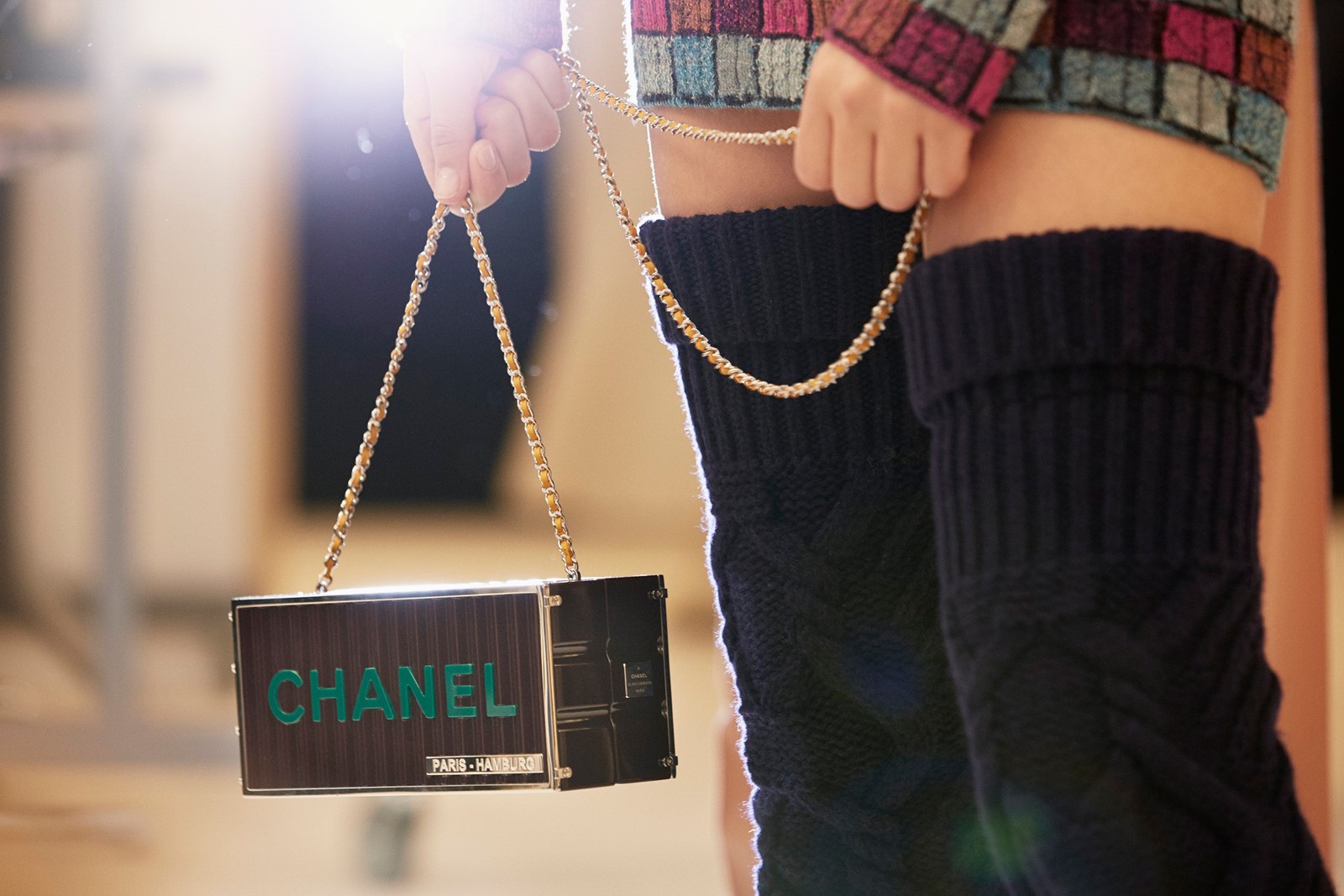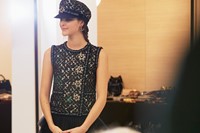Crouched on the northern banks of the Elbe river in Hamburg port, the Elbphilharmonie concert hall is a striking juxtaposition of old and new – a 1963 tea, tobacco and cocoa warehouse, Kaispeicher A, forms the base for a soaring glass structure undulating like a wave or a swelling sail and designed by Jacques Herzog and Pierre de Meuron. An old institution used as the foundation for something brave and new – it’s all very much the modus operandi of Chanel – hence the fact that the house commandeered the Hamburg ‘Elphi’ as the venue for their 2018 Métiers d’Art show on Wednesday night.
Like the concert hall, Chanel has been spectacularly reinvented, not just by tinkering with the façade, but via an entire structural reengineering during Karl Lagerfeld’s tenure (34 years and counting) using the basis established by Gabrielle Chanel to build something strikingly modern. Chanel has done nothing less than redefine the idea of a luxury fashion house for the 21st century. It’s not just by playing with Chanel-isms though: Lagerfeld has left his discernible imprint on the label throughout his time – “There are lots of things people think are native to the House which were born since I was here,” Lagerfeld states. “My job is to make-believe.”
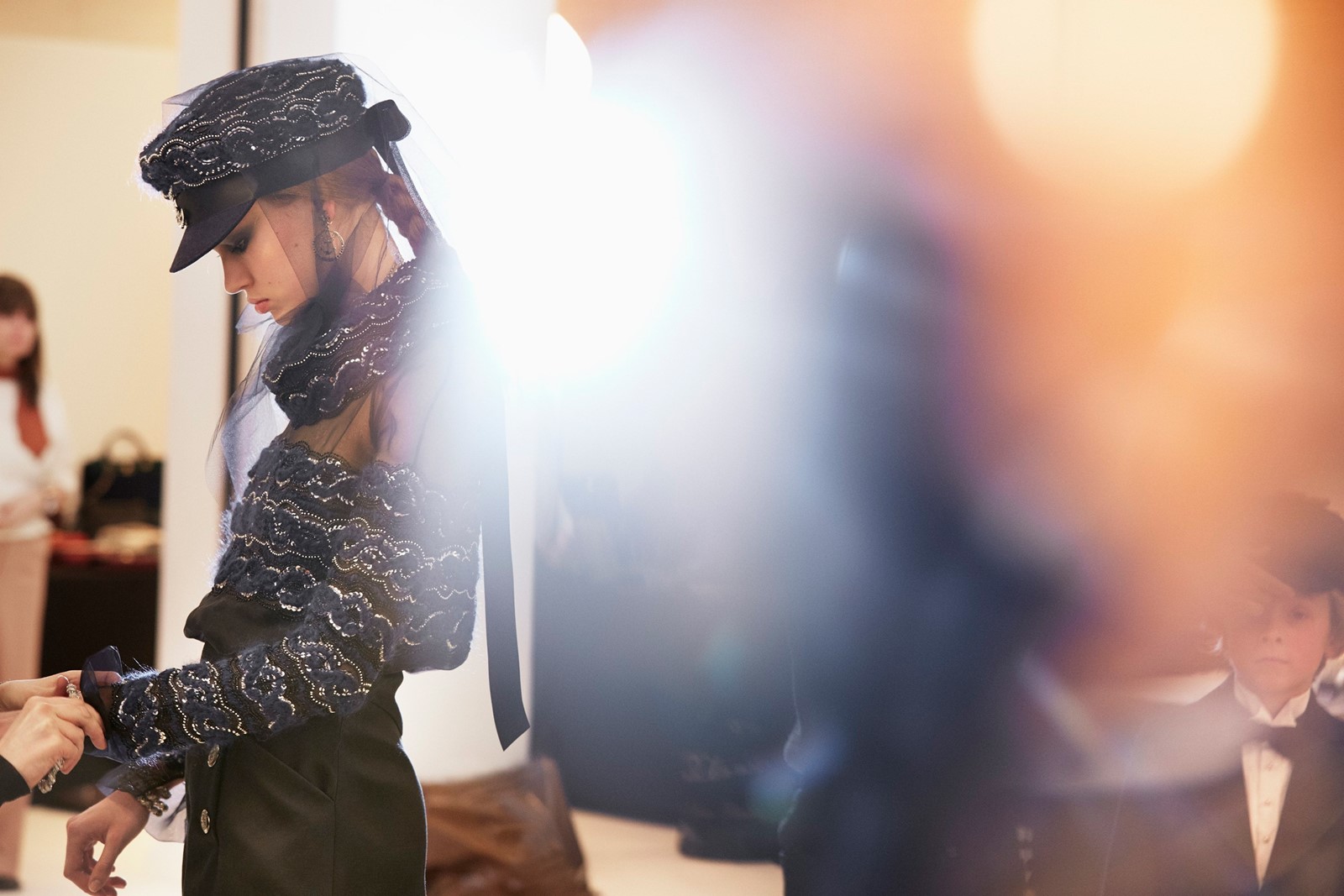
The make-believe this time was a melding of Lagerfeld’s history with that of Chanel – which isn’t as unexpected as it may sound. Lagerfeld himself was born and raised in Hamburg, a port city filled with sailors who were, incidentally, the source of inspiration for many of the clothes Gabrielle Chanel proposed. Her signature fabric, jersey, came from fishermen, as did the matelot-striped sweaters Chanel made one of her leitmotifs. Back then, a century or so ago, the jettisoning of ornamentation felt like a modern breed of luxury, after the overly ostentatious and overdecorated clothes of the Edwardian era. Today, the opposite is true – in the era of fast fashion, luxury is found in clothes that take time to create. That is the leitmotif of the Métiers d’Art, a collection created to fill the market gap others call pre-Fall, but which is devoted to showing off the expertise of an array of specialist craft houses. Chanel has taken a financial stake in all of them, ensuring not only the survival of these individual ateliers, but of their traditional methods of working, many dating back to the time of Marie Antoinette. Among those supported are the embroiderers Montex and Lesage, the Scottish knitwear company Barrie, master pleating house Lognon, and Lemarié, whose official title is plumassier – meaning feather specialist. The latter was responsible for Lagerfeld’s take on the matelot, a mini-dress composed of painstakingly hand-painted striped feathers; while the milliner Maison Michel created 87 sailor caps for the show, in traditional Chanel bouclé tweed, bejewelled with various brooches and occasionally veiled in tulle. Uniform, they were not.

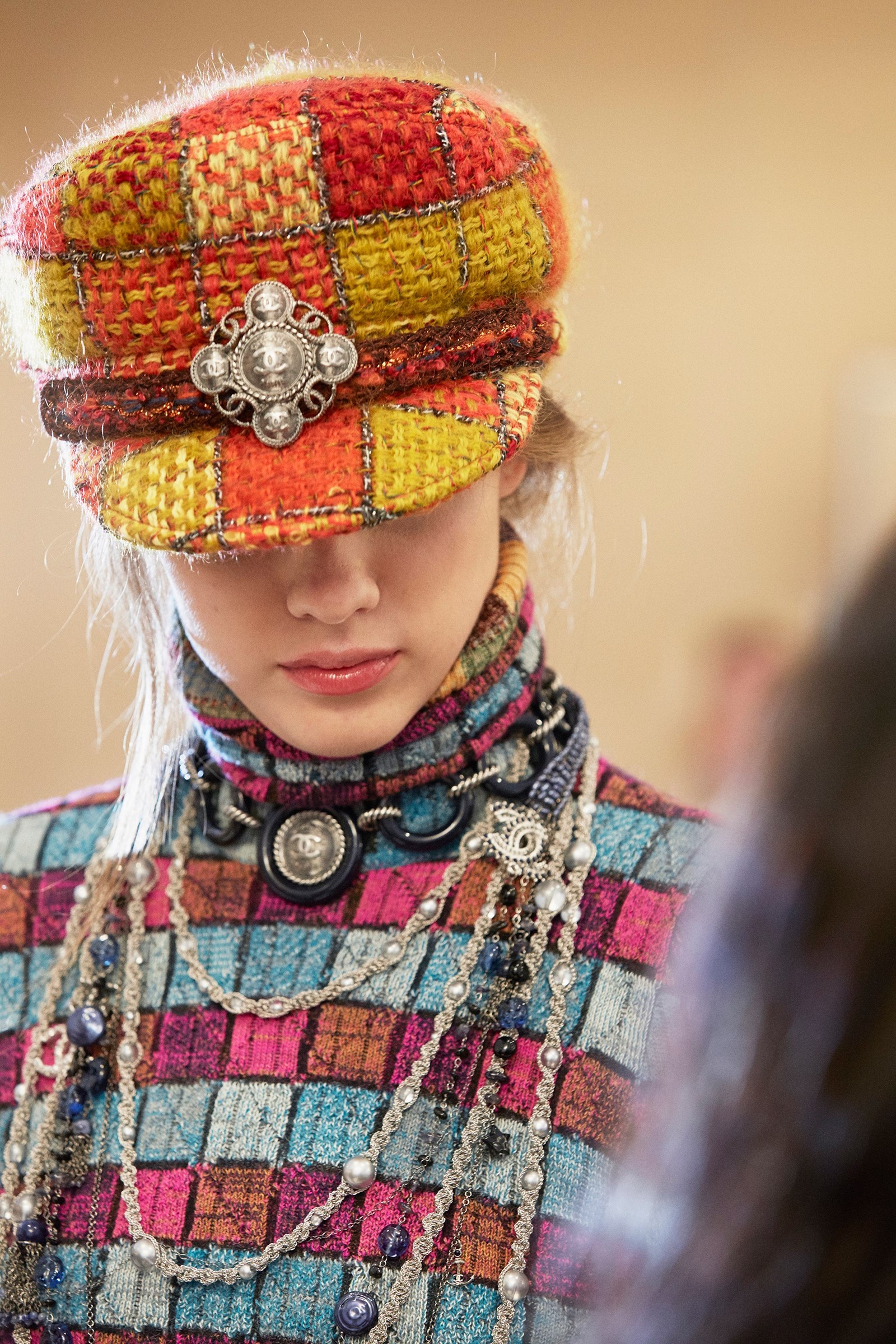
Lagerfeld wasn’t evoking his own childhood in this show, despite its locale and a distinct the predilection for sailor outfits, which seemed terribly Tadzio in Death in Venice – Lagerfeld has previously described his mother as a Thomas Mann heroine, who demanded Lagerfeld stay silent during her daily violin practice. The idea of Hamburg was ephemeral, grounded in the architecture and aesthetics of the city still evident today, rather than Lagerfeld doing any recherche-ing for temps perdu. The tweeds were predominantly black, white and grey, with flashes of brick red and a play with light glinting on iridescent fabric or embroidery, inspired by light playing with the surface of the water that dominates the city.
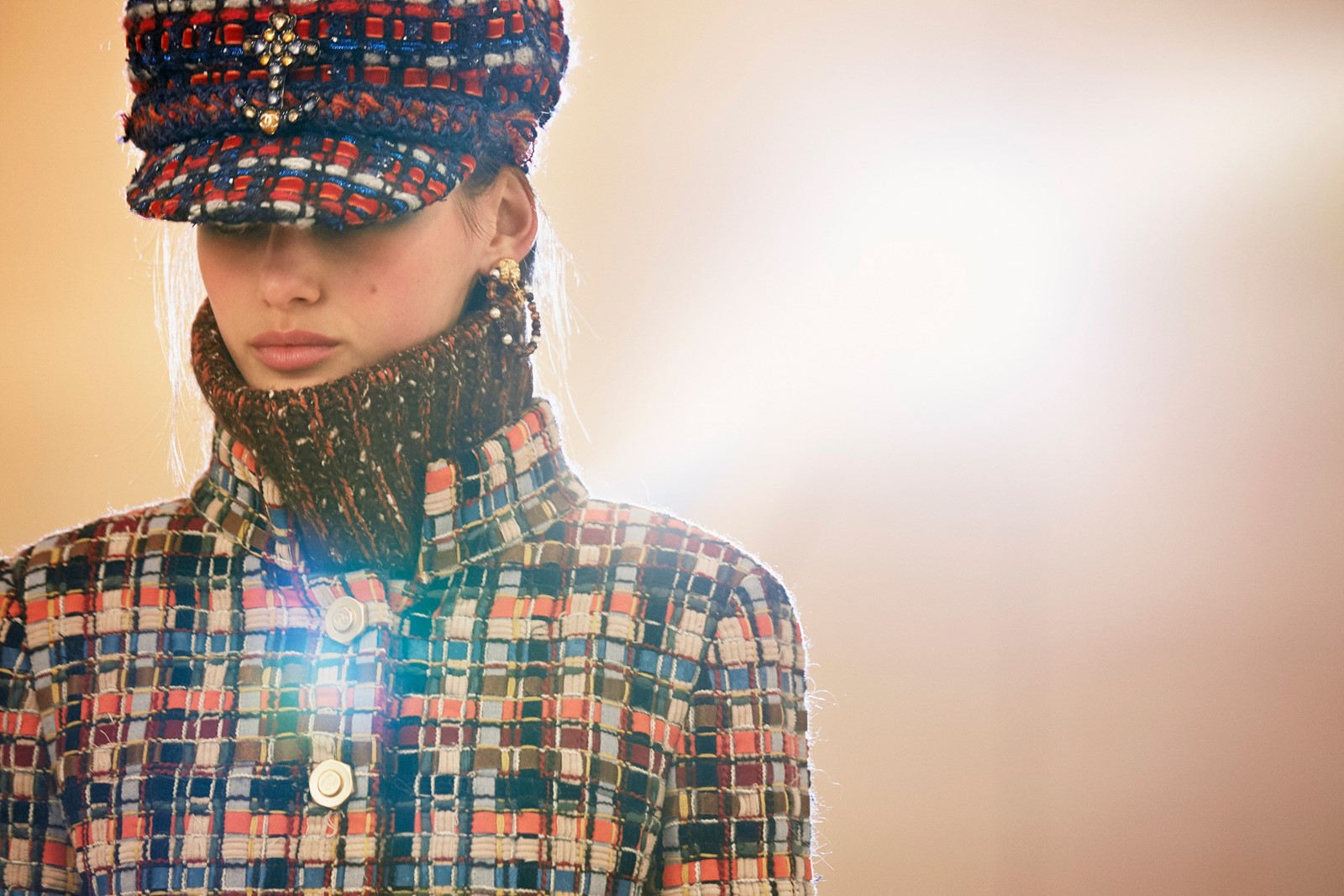
It was typically Lagerfeld, however, to stage his collection not in a nostalgic throwback to Hamburg’s past, but in a modern building notable for its dissimilarity to just about anything else on the city’s skyline. Inside Herzog & de Meuron’s glass tsunami, a 2,100-seater orchestral hall played host to Lagerfeld’s Chanel show and a full orchestra, playing music created especially for the show inside a room constructed like an anechoic chamber. The walls themselves seemed embroidered, with a skin of 10,000 meticulously constructed gypsum fibre panels designed to reflect sound into every corner, and create a perfect acoustic. It was a fitting locale for a pitch-perfect Chanel collection, in the key of Coco but entirely composed by the contemporary genius of Karl Lagerfeld, Hamburg’s prodigal son.
